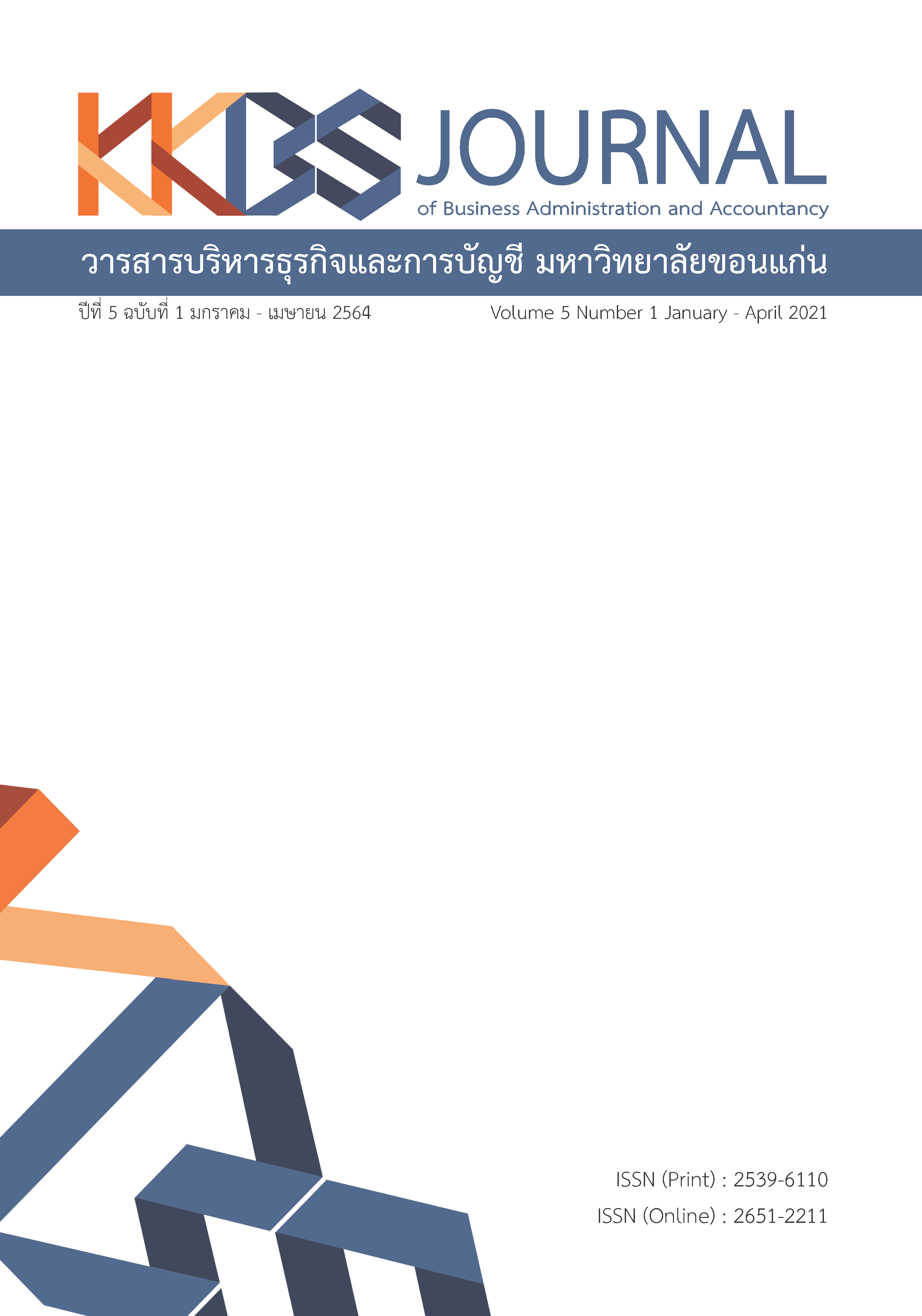การศึกษาภาพลักษณ์การท่องเที่ยวที่มีอิทธิพลต่อความภักดีของนักท่องเที่ยวไทยบริเวณแหลมบาลีฮาย พัทยา จังหวัดชลบุรี เพื่อก้าวสู่เขตพัฒนาพิเศษภาคตะวันออก
Main Article Content
บทคัดย่อ
การวิจัยครั้งนี้ มีวัตถุประสงค์เพื่อศึกษาความแตกต่างระหว่างข้อมูลส่วนบุคคลกับความภักดี ของนักท่องเที่ยวบริเวณแหลมบาลีฮาย พัทยา จังหวัดชลบุรี และเพื่อศึกษาภาพลักษณ์การท่องเที่ยวที่มีอิทธิพลต่อความภักดีของนักท่องเที่ยวบริเวณแหลมบาลีฮาย พัทยา จังหวัดชลบุรี กลุ่มตัวอย่างเป็นนักท่องเที่ยวไทยที่เดินทางเข้ามาท่องเที่ยวบริเวณแหลมบาลีฮาย พัทยา จังหวัดชลบุรี จำนวน 400 คน เก็บข้อมูลโดยใช้แบบสอบถาม วิเคราะห์ข้อมูลด้วยสถิติทดสอบที (Independent Sample t-test) การวิเคราะห์ความแปรปรวนทางเดียว (One-way ANOVA) และการวิเคราะห์การถดถอยพหุคูณ (Multiple Regression Analysis)
ผลการวิจัยพบว่า กลุ่มตัวอย่างส่วนใหญ่เป็นเพศหญิง อายุระหว่าง 21 -30 ปี รายได้ไม่เกิน 10,000 บาทต่อเดือน เป็นนักเรียน นักศึกษา ผลการทดสอบสมมติฐานทางสถิติแสดงให้เห็นว่านักท่องเที่ยวไทยที่มีข้อมูล สวนบุคคล ประกอบด้วย อายุ และอาชีพ แตกต่างกัน มีความภักดีในการท่องเที่ยวบริเวณแหลมบาลีฮาย พัทยา จังหวัดชลบุรี แตกต่างกัน และภาพลักษณ์การท่องเที่ยวที่มีอิทธิพลต่อความภักดีของนักท่องเที่ยวไทยที่เดินทางเข้ามาท่องเที่ยวบริเวณแหลมบาลีฮาย พัทยา จังหวัดชลบุรี มี 4 ด้าน คือ ด้านวัฒนธรรมและประวัติศาสตร์ ด้านกายภาพ ด้านเศรษฐกิจ และด้านสิ่งก่อสร้าง ตามลำดับ สามารถอธิบายความภักดีของนักท่องเที่ยวไทยได้ร้อยละ 54 ดังนั้น ผู้ประกอบการและหน่วยงานที่เกี่ยวข้อง ควรส่งเสริมการจัดกิจกรรมท่องเที่ยวที่หลากหลาย รักษาทิวทัศน์ให้สวยงาม จัดหาเส้นทางคมนาคมสะดวกเข้าถึงแหล่งท่องเที่ยวต่างๆ ได้ง่าย เพื่อให้นักท่องเที่ยวเกิดความประทับใจและกลับมาท่องเที่ยวบริเวณแหลมบาลีฮาย พัทยา จังหวัดชลบุรี
Article Details
บทความที่ได้รับการตีพิมพ์ในวารสารเป็นความคิดเห็นของผู้เขียน มิใช่ความคิดเห็นของกองบรรณาธิการและคณะผู้จัดทำวารสาร และบทความที่ได้รับการตีพิมพ์เป็นลิขสิทธิ์ของวารสารบริหารธุรกิจและการบัญชี มหาวิทยาลัยขอนแก่น
References
Ayre, C. & Scally A. (2014). Critical values for Lawshe’s content validity ratio: revisiting the original methods of calculation. Measurement and Evaluation in Counseling and Development, 47, 79-86.
Burns, P. & Novelli, M. (2008). Tourism development: growth, myths, and inequalities. Cambridge: CABI.
Chaisri, A. Seda, R. & Toopoj, S. (2018). The influential factors of the marketing of buddhism tourism in Chaiyaphum Province. College of Asian Scholar Journal, 8(1), 133-140. (In Thai)
Chen, C. & Tsai, D. (2007). How destination image and evaluative factors affect behavioral intentions? Tourism Management, 28, 1115-1122.
Economic Statistics and Social Office. (2014). Survey of travel behavior of Thai people in 2014. Bangkok: National Statistical Office. (In Thai)
Jankingthong, W. (2015). Structural equation model of factors affecting tourist loyalty toward marine national parks in southern Thailand. Silpakorn University Journal, 35(2), 1-18. (In Thai)
Kongprasert, T. et al. (2014). Factors influencing type of Japanese Tourists in Chiang Mai. Songklanakarin Journal of Management Sciences, 31(2), 1-33. (In Thai)
Kotler, P. & Armstrong, G. (2010). Principles of marketing. 13th ed. Hoboken, NJ.: Pearson.
Kozak, M. & Baloglu, S. (2011). Managing and marketing tourist destinations: strategies to gain a competitive edge. New York: Routledge.
Ministry of Tourism and Sports. (2019). Domestic tourism statistics. Retrieved August 23, 2019, from: https://www.mots.go.th/News-link.php?nid=12091 (In Thai)
Ministry of Tourism and Sports. (2020). Domestic tourism statistics. Retrieved March 10, 2020, from: https://www.mots.go.th/News-link.php?nid=12415 (In Thai)
National Tourism Policy Board. (2017). Tourism plan volume 2 (2017-2021). Bangkok: National Tourism Secretaty Office. (In Thai)
Ngamvong, N. & Jitnupong, W. (2020). The comparison of special local government administration in Thailand: Bangkok Metropolitan Administration and Pattaya City. Journal of MCU Peace Studies, 8(2), 445-458. (In Thai)
Page, S. (2011). Tourism management: An introduction. 5th ed. Oxford: Butterworth-Heinemann.
Rajaratnam, S.D. et al. (2014). Service quality and previous experience as a moderator in determining tourists’ satisfaction with rural tourism destinations in Malaysia: A partial least squares approach. Procedia-Social and Behavioral Sciences, 144, 203-211.
Sobkhunthot, P., Donkwa, K. & Pitsaphol, C. (2020). Loyalty of international tourists toward historical tourism. Suranaree Journal of Social Science, 9(1), 65-80. (In Thai)
Sukiman, M.F. et al. (2013). Tourist satisfaction as the key to destination surrival in Pahang. Procedia-Social and Behavioral Sciences, 91, 78-87.
Theeranon, S. & Agmapisarn, C. (2016). The effect of foreign tourists’ destination image towards decision-repeated traveling in Bangkok, Thailand: After political crisis 2013 to 2014. Economics and Public Policy Journal, 7(13), 38-55.
Tongkaw, A. & Saethow, P. (2018). The determinants of demand affecting to loyalty of tourists at ancient Chinese Chakngeaw Market Community Pattaya City. Dusit Thani College Journal, 12(Special issue), 220-230. (In Thai)
Vanichbuncha, K. (2005). Statistics for research. Bangkok: Faculty of Commerce and Accountancy Chulalongkorn University. (In Thai)
Wang, B. et al. (2015). Holiday travel behavior analysis and empirical study under integrated multimodal travel information service. Transport Policy, 39, 21-36.
Walum, A., Jindabot, T. & Rattanapan, N. (2019). Malaysian muslim tourist’s travel pattern for travelling in Hat Yai District, Songkhla province. KKBS Journal of Business Administration and Accountancy, 2(3). 50-62. (In Thai)
Yamane, T. (1973). Statistics: An introductory analysis. 3rd ed. New York: Harper and Row.
Zeithaml, V.A., Bitner, M. & Gremler, D.D. (2009). Service marketing: Integrateing customer focus across the firm. 5th ed. Boston: McGraw-Hill/Irwin.

